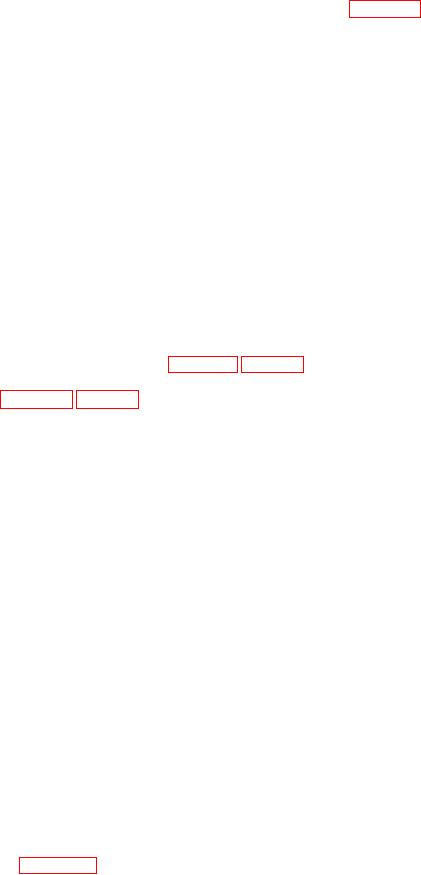
TM 5-3895-369-14
(21) To ease assembly and installation, tag and mark shims, connectors, wires, and mating ends of lines before
disconnecting them. Identify similar parts to ensure correct assembly.
(22) Before removal of any electrical component, disconnect battery cables (para 4-90).
(23) Ensure that adequate clearance is available for removal of component. Disassemble vehicle to the extent
necessary to provide adequate working clearance.
(24) Use chain hoist, jack, or other aid when lifting heavy components. Lifting device should be positioned and
attached to components to remove all strain from mounting hardware before last hardware is removed.
(25) Discard preformed packings, gaskets, seals, and similar material when removed. Be sure that all traces of
oil, gaskets, and sealants are removed. When possible, use wood or plastic probes and scrapers to prevent damage to
machines surfaces.
(26) Cotter pins, lockwashers, star washers, lockwire, self-locking nuts, and any similar locking devices must be
discarded when removed. Self-locking fasteners that loosen up must be replaced, not tightened.
(27) Remove parts only if repair or replacement is required. Do not disassemble a component any further than
necessary to accomplish needed repairs.
g. Painting. Instructions for preparation of material for paint, how to paint, and materials to be used are in TM
43-0139. Instructions for camouflage painting, stenciling and marking military vehicles are called out in TB 43-0209.
Data plates location and description are referenced in Chapter 2 (para 2-3).
h. Lubrication. Refer to Chapter 3 (para 3-1) for lubrication procedures and requirements for vehicle. The
instructions include types and grades of lubrications used, lube points, locations and frequency of required lubrication,
Assembly.
i.
(1) Remove protective grease coatings from new parts before installation.
(2) To replace preformed packings, first clean groove, then stretch packing into position. Rotate component
on flat surface applying downward pressure to uniformly press packing into position. A light coating of fluid which the
packing will operate in, will make assembly easier.
(3) Coat oil seals evenly with oil or grease before installing. Install oil seals with seal lip facing in, applying an
even force to the outer edge of seal. If oil seals are to be installed over keyed or splined shafts, use a guide to prevent
sharp edges of the keyway or splines from cutting the seal. Guides can be very thin gauge sheet metal shaped to the
required diameter. Make certain guide edges are not sharp and are bent slightly inward so they do not cut the seal.
(4) Lubricate bearings before reassembly with the type of lubricant normally used in the related housing or
container. This will provide lubrication during the first run-in until lubricant from the system can reach the bearings.
j. Installation. Put hoses, tubes, lines, and electrical wiring in place by matching identification tags, markings on
equipment, and using illustrations presented. Use sealing compounds as required in each maintenance task. When
installing screws and nuts, be sure to tighten to values given.
k. Welding Procedures. Welding may be used to repair cracks in steel parts. These repairs should be made only
when replacement parts are not available. Do not weld running parts. Visually inspect all welds for cracks. Parts that
carry a great load should receive magnetic particle inspection. Critical nonferrous parts may be inspected with
florescent penetrant (item 50, appendix E).
5-9

